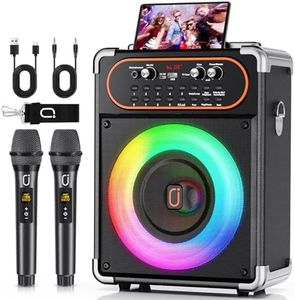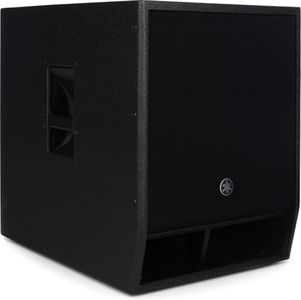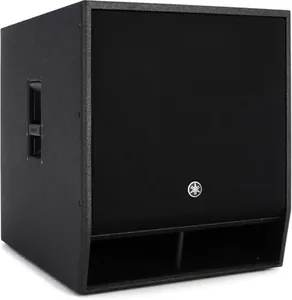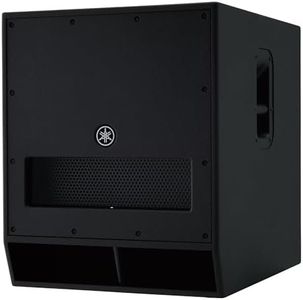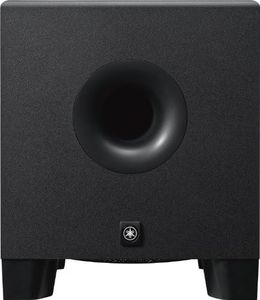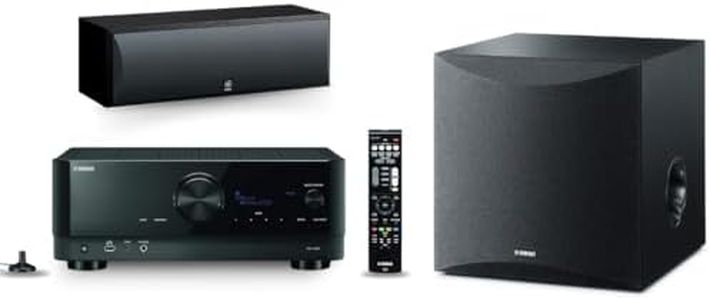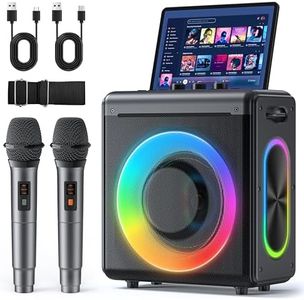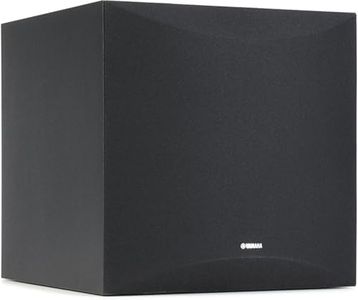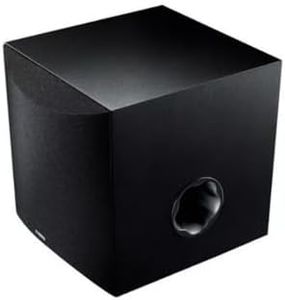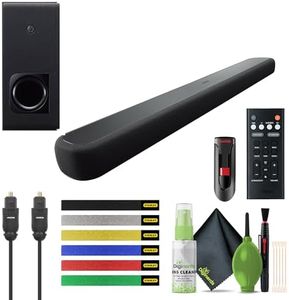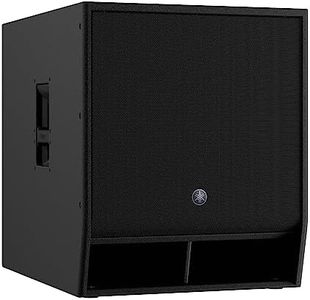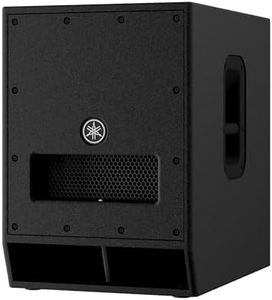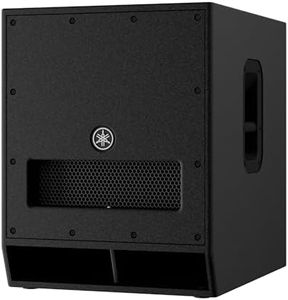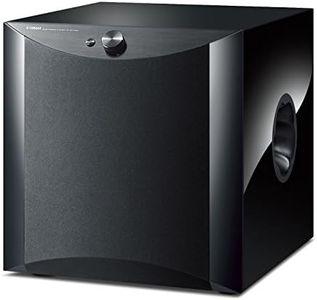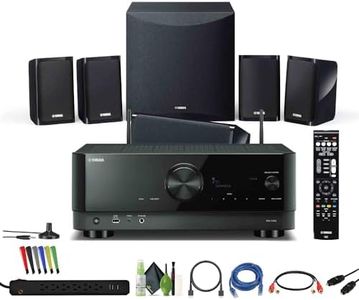10 Best Yamaha Subwoofers 2025 in the United States
Our technology thoroughly searches through the online shopping world, reviewing hundreds of sites. We then process and analyze this information, updating in real-time to bring you the latest top-rated products. This way, you always get the best and most current options available.

Our Top Picks
Winner
Yamaha DXS15XLF 15-inch 1600W Powered Subwoofer
Most important from
30 reviews
The YAMAHA DXS15XLF 15-inch 1600W Powered Subwoofer is a robust choice for professional audio applications. One of its standout features is the 15-inch driver with a 4-inch voice coil, delivering powerful bass. The subwoofer's frequency response ranges from 33Hz to 150Hz, making it suitable for a wide variety of sound engineering demands. With a maximum output of 136dB SPL, it can handle high-volume environments effectively.
The 1600W Class-D amplifier ensures ample power, while the 96kHz DSP and FIR filter contribute to high-definition sound and minimal latency, which is crucial for live performances and precise audio reproduction. The intuitive LCD display allows users to access various DSP functions and presets, as well as make fine adjustments to parameters like PEQ, delay, and routing. This can be particularly beneficial for sound engineers needing to tailor the subwoofer's performance to specific settings.
However, the subwoofer is quite heavy, weighing in at 88.2 pounds, which might be a consideration for those needing portability. Additionally, while it has versatile connectivity options like RCA and XLR, its large size may not be suitable for every setting. For those in need of a powerful, high-quality subwoofer for professional use, the Yamaha DXS15XLF presents a compelling option.
Most important from
30 reviews
Yamaha DXS18XLF 18-inch 1600W Powered Subwoofer
Most important from
30 reviews
The Yamaha DXS18XLF is a powerful 18-inch powered subwoofer that delivers a strong 1600W output, making it well-suited for professional audio and home theater environments where deep, clear bass is important. Its 30Hz to 150Hz frequency range covers the low end very effectively, providing rich, punchy bass that meets the demands of modern sound systems. The 18-inch driver with a 4-inch voice coil ensures solid bass performance and durability.
One standout feature is the built-in 96kHz DSP, which allows for precise sound tuning with low latency, giving users control over equalization, delay, and routing via an intuitive LCD display. This makes it flexible for different room sizes and setups. The enclosure is designed for tabletop mounting, which is convenient but also means it’s not a floor-standing model—something to consider depending on your space and setup preferences. Connectivity via Ethernet is a professional feature, offering stable and high-quality signal transmission, but it might be more than casual users need.
Weighing nearly 108 pounds, this subwoofer is quite heavy, so portability could be a challenge despite it being described as portable. While it doesn’t have waterproofing, it’s robust enough for stage and studio use. For those needing a high-powered, precise, and reliable subwoofer for serious sound reinforcement or home theater bass enhancement, the DXS18XLF is an excellent choice. However, casual users or those needing something lighter and simpler may find it more than they require.
Most important from
30 reviews
Yamaha DXS18 Powered Subwoofer
Most important from
70 reviews
The Yamaha DXS18 Powered Subwoofer is a strong choice for those needing deep, powerful bass in a home theater or professional audio setup. Its 18-inch woofer paired with a high-efficiency 1020-watt Class-D amplifier delivers loud and clear low frequencies with minimal distortion. The band-pass enclosure design helps produce high sound pressure levels, making bass punchy and well-defined. The wooden cabinet coated with LINE-X adds durability and a sleek look.
Connectivity is straightforward with XLR inputs, common in professional audio gear, suitable for connecting to mixers or sound systems. While weighing about 20 pounds, it’s fairly manageable for floor placement but might not be ideal if you need a very portable option. Though it lacks wireless options, the DXS18 excels in delivering powerful bass with precise control thanks to Yamaha’s D-XSUB processing.
This subwoofer is ideal for users wanting robust low-end performance in music or movies, especially when paired with other Yamaha speakers. If you require a compact or highly portable subwoofer, or simpler consumer-level connections like Bluetooth, this model might not be the best fit.
Most important from
70 reviews
Buying Guide for the Best Yamaha Subwoofers
Choosing the right subwoofer can significantly enhance your audio experience, whether you're setting up a home theater system or just want to enjoy music with deep, rich bass. Yamaha subwoofers are known for their quality and performance, but it's important to understand the key specifications to find the best fit for your needs. Here are some essential specs to consider and how to navigate them.FAQ
Most Popular Categories Right Now
